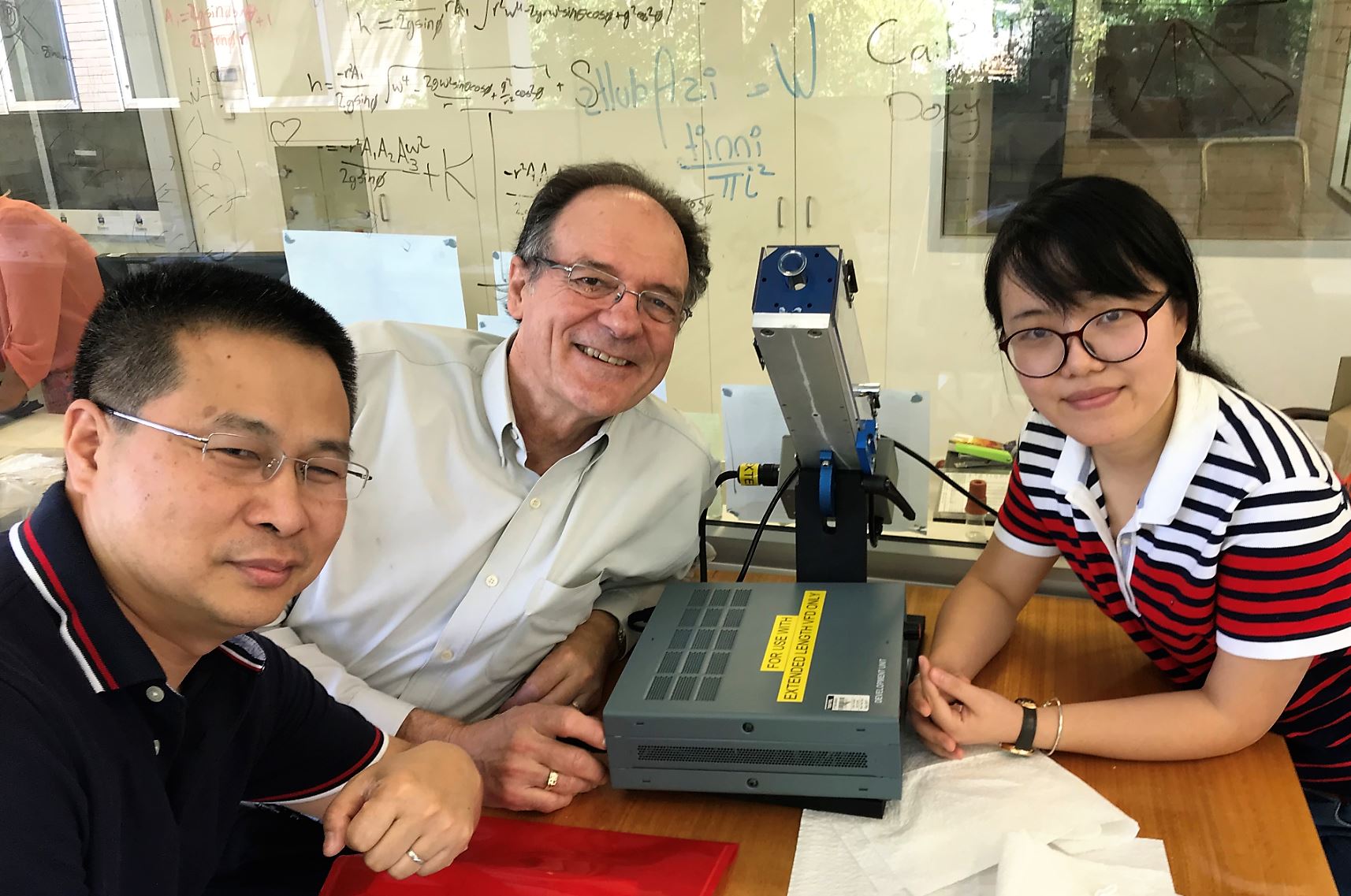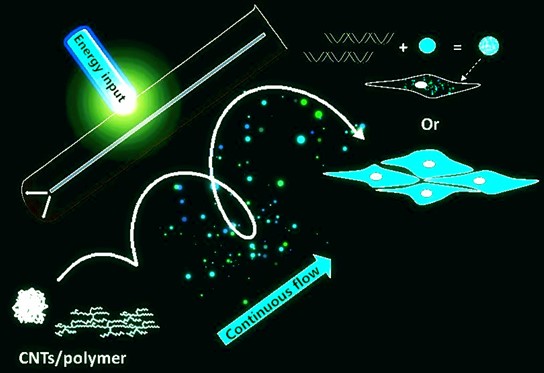
The future of improved biomarkers is looking brighter as Flinders University researchers shine a laser light on promising new ‘green’ compounds for medical applications.
Streamlining production of new ‘functional fluorescent materials’ raises the potential for making less toxic drugs and more affordable cell imaging and even gene therapy treatments for major diseases such as cancer, says research leader Professor Colin Raston.
The functional materials, using carbon nanotubes and an organic polymer, have been subjected to simple laser and heat treatments using the vortex fluidic device (VFD), a novel chemical reactor developed at Flinders University.
“We are excited to find yet more applications for the VFD, to improve green chemistry in processing raw materials such as carbon nanotubes – one of the world’s strongest materials,” says Professor Raston, who first used the device to ‘unfold’ egg proteins in collaboration with US scientists.
“These new fabrication processes being pioneered at Flinders apply the principles of green chemistry to use more benign oxidants and avoid toxic reagents and harsh chemicals, which is attractive to industry and much better for the environment.”
The latest developments, published this week in international journals, respectively involves modifying an organic polymer (Polyethylenimine, or PEI) into polymer nanoparticles and multi-walled carbon nanotubes or carbon ‘nanodots’ under continuous shear flow in the VFD.
“Made fluorescent in the device, these materials have reduced cytotoxicity and have potential in different areas of medicine, for example in staining cells and incorporating DNA in them,” says researcher Ms Xuan Luo.

“Biomedical scientists here at the Flinders, and also the Centre for Nanoscale Science and Technology, plan to use this innovative new laser and thin liquid flow processing to deliver and develop other processes for pharmaceutical manufacturing in the future.”
Producing more affordable and effective functional biomarkers paves the way for improved catalysis, bioimaging, biosensing and drug delivery. In addition, significant improvement in fluorescence could improve results from both complex or routine medical tests.
Professor Raston, with co-researcher Professor Wei Zhang from the Flinders Centre for Marine Bioproducts Development, describe the latest discoveries as potentially “ground-breaking”, with further research now looking at raising fluorescence and scaling up for further applications in the areas of DNA delivery and cell transfection.
Since the VFD ‘unboiling’ an egg hit the headlines, the machine has been used to rapidly spin a range of chemicals in water soluble and other non-toxic liquids – significantly reducing the cost and environmental harm in a range of chemical processes.
The Vortex Fluidic Device is a film flow chemical reactor that harnesses high shear forces, micro-mixing and reactions beyond diffusion to produce a range of industrial and experimental compounds including biodiesel, folded proteins, carbon nanotubes, mesoporous silica and pharmaceuticals.
‘Laser irradiated vortex fluidic mediated synthesis of luminescent carbon nanodots under continuous flow’ by Xuan Luo, Ahmed Hussein Mohammed Al-Antaki, Kasturi Vimalanathan, Jillian Moffatt, Kun Zheng, Yichao Zou, Jin Zou, Xiaofei Duan, Robert N. Lamb, Shujun Wang, Qin Li, Wei Zhang and Colin L. Raston has been published in Reaction Chemistry and Engineering (Royal Society of Chemistry). DOI: 10.1039/C7RE00197E
‘High-Shear-Imparted Tunable Fluorescence in Polyethylenimines’ by X. Luo, A.H. Mohammed Al-Antaki, Scott Pye, Robyn Meech, W. Zhang and C.L. Raston has been published in ChemPhotoChem (Wiley) DOI: 10.1002/cptc.201700206


